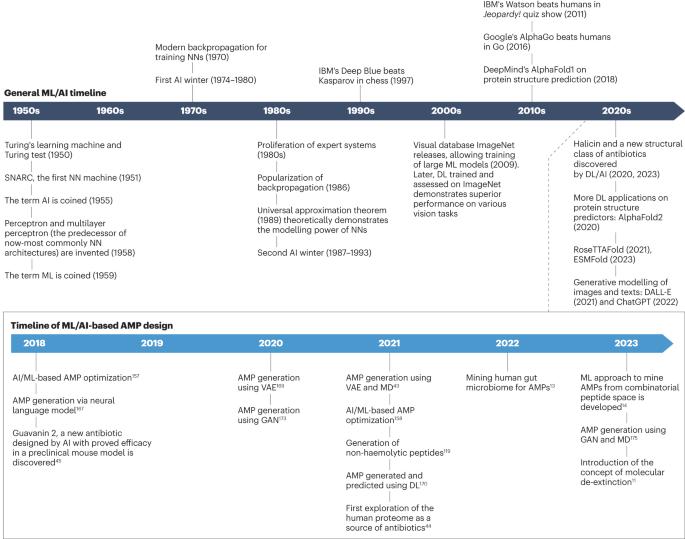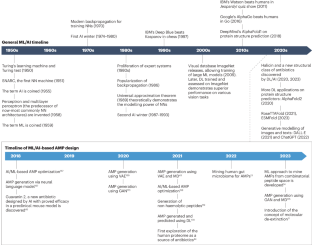Machine learning for antimicrobial peptide identification and design
IF 37.6
引用次数: 0
Abstract
Artificial intelligence (AI) and machine learning (ML) models are being deployed in many domains of society and have recently reached the field of drug discovery. Given the increasing prevalence of antimicrobial resistance, as well as the challenges intrinsic to antibiotic development, there is an urgent need to accelerate the design of new antimicrobial therapies. Antimicrobial peptides (AMPs) are therapeutic agents for treating bacterial infections, but their translation into the clinic has been slow owing to toxicity, poor stability, limited cellular penetration and high cost, among other issues. Recent advances in AI and ML have led to breakthroughs in our abilities to predict biomolecular properties and structures and to generate new molecules. The ML-based modelling of peptides may overcome some of the disadvantages associated with traditional drug discovery and aid the rapid development and translation of AMPs. Here, we provide an introduction to this emerging field and survey ML approaches that can be used to address issues currently hindering AMP development. We also outline important limitations that can be addressed for the broader adoption of AMPs in clinical practice, as well as new opportunities in data-driven peptide design. Artificial intelligence (AI) and machine learning (ML) are reshaping antibiotic discovery. In this Review, ML approaches that have been and can be used to address issues hindering antimicrobial peptide identification and development are surveyed.


抗菌肽鉴定和设计的机器学习
人工智能(AI)和机器学习(ML)模型正被应用于社会的许多领域,最近已进入药物发现领域。鉴于抗菌药耐药性的日益普遍以及抗生素开发所面临的内在挑战,迫切需要加快设计新的抗菌疗法。抗菌肽(AMPs)是治疗细菌感染的药物,但由于其毒性、稳定性差、细胞渗透有限和成本高昂等问题,将其应用于临床的进程一直很缓慢。人工智能和 ML 的最新进展使我们在预测生物分子特性和结构以及生成新分子方面取得了突破性进展。基于 ML 的多肽建模可以克服传统药物发现的一些弊端,帮助快速开发和转化 AMP。在此,我们将对这一新兴领域进行介绍,并对可用于解决目前阻碍 AMP 开发问题的 ML 方法进行调查。我们还概述了在临床实践中更广泛地采用 AMP 时可以解决的重要限制,以及数据驱动多肽设计的新机遇。
本文章由计算机程序翻译,如有差异,请以英文原文为准。
求助全文
约1分钟内获得全文
求助全文

 求助内容:
求助内容: 应助结果提醒方式:
应助结果提醒方式:


